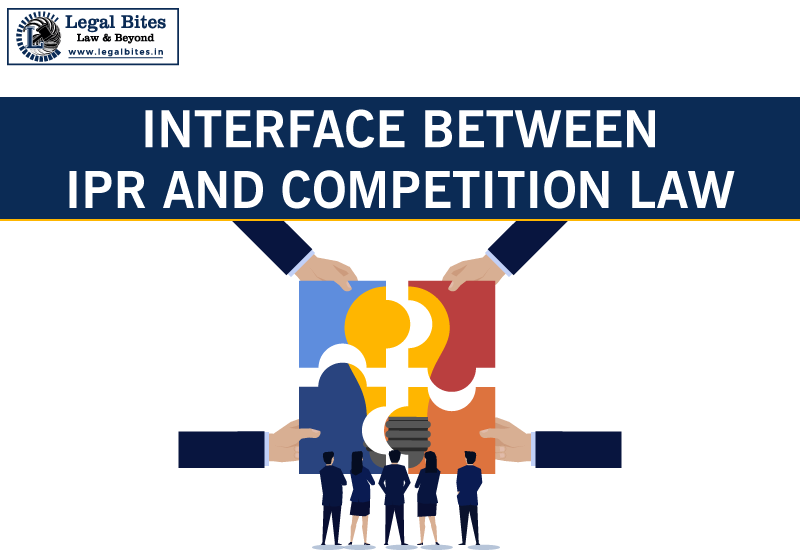Determination of Relevant Market: Concept and Rules
The article gives an insight into the relevant market and describes how such a relevant market can be determined with the help of some case laws.;

The article gives an insight into the relevant market and describes how such a relevant market can be determined with the help of some case laws. Further, the article also throws light on the rule of per se, rule of reason and rule of presumption, which is a basic ingredient for determining such a market. Introduction When a seller tries to attain the funds of the buyer so that market share or profits can be achieved by the seller is known as competition. Various theories of economics...
The article gives an insight into the relevant market and describes how such a relevant market can be determined with the help of some case laws. Further, the article also throws light on the rule of per se, rule of reason and rule of presumption, which is a basic ingredient for determining such a market.
Introduction
When a seller tries to attain the funds of the buyer so that market share or profits can be achieved by the seller is known as competition. Various theories of economics have suggested that quantities and prices help maintain the equilibrium in the market in order to produce efficient results. Also, competition helps not only to maintain transparency and accountability but also to reduce lobbying and corruption in the market.
It is important to promote competition as it provides an increase in the supply of products with high quality at a lower rate. Instead of putting a full stop to competition, Competition policies and laws help in encouraging competition by classifying anti-competitive practices as offences and providing punishments for the same.
The Indian Parliament came out with the Competition Act in 2002 to regulate competition in the market by repealing the Monopolies and Restrictive Trade Practices Act of 1969. The Competition Act of 2002 has been amended twice, once in 2007 by virtue of The Competition (Amendment) Act, 2007 and then in 2009 by virtue of The Competition (Amendment) Act, 2009.
There are two principal features of the Competition Act of 2002, namely, the establishment of the Competition Commission of India not only to promote competition which is positive and healthy in nature but also to prohibit all the anti-competitive practices prevailing in the Indian market.
The Act is drafted in such a way that it lays down certain tools and legal frameworks in order to make sure that the competition policies are being followed and to do away with the anti-competitive practices and if any of such policies are followed, the Act provides punishment for the same. The Act, inter alia, works to protect the free, fair and healthy competition in the market, freedom of trade and interests of the public at large.
The Act was brought with the following objectives:
- Providing a framework so that the Competition Commission can be established
- Preventing monopolies and promoting competition in the market
- Protecting freedom of trade for all the entities and individuals that participate in the market
- Protecting the interests of the consumer
The Act works in a direction to put a full stop to some Anti-competitive practices such as Mergers and Acquisitions, Abuse of dominant positions and anti-competitive agreements.
I. Relevant Market
Sec 2 (r) of the Act provides a framework that helps determine the relevant market. A forum where various enterprises come together to sell and buy required services or products, such a place is known as a market in terms of competition law.[1] European Commission had issued a notice which differentiated the market into geographical and objective dimensions.[2] Similarly in India, the broad term ‘relevant market’ can be broken down into two small terms with a limited scope namely ‘relevant product market’ and ‘relevant geographic market’.
A relevant product market takes a market into its ambit where the services and products are of such a nature that they can be substituted or interchanged by other services and products that are readily available in the market.[3] However, the relevant geographic market refers to that market in an area where there exists a homogeneous condition for varied aspects of commerce and trade. These conditions are different from those carried out in the market of the neighbouring areas.[4] The commission is required to refer to either the ‘relevant product market’ or ‘relevant geographic market’ or both.
In the matter of M/s Saint Gobain Glass India Ltd. v. M/s Gujrat Gas Company Limited,[5] the CCI has taken into its consideration various factors while it was determining the relevant market and its types viz., relevant product market and relevant geographic market. In order to determine the relevant product market, the CCI had laid down some of the factors such as classifying the industrial products, presence of specialized producers, exclusion of in-house production, preferences of consumers, prices of services or goods, end-use of goods and physical characteristics of goods, as per the provisions laid down in the Act.[6]
Further, there is another set of factors which have to be considered for the determination of relevant geographic market, such as the requirement of regular and secure supplies, the need for rapid after-sale services, consumer preferences, language, transport costs, facilities, adequate distribution facilities, national procurement policies, need of local specification, regulating trade barriers and so on.[7]
II. Determination of Relevant Market
It is important to consider three principal factors for the determination of the relevant market. The very first factor to be considered is the recognition of a useful, appropriate and significant product for the consumers. The second thing to be considered is to locate the relevant geographical market, from the point of view of the consumer. The last factor to be considered is the situation of the market which favours the entry of entrepreneurs.
When concentrations are to be considered, the determination of the market and its analysis has to be done on an economic basis. This is concluded from the definition of the market provided by the notice of the European Commission, whereby the application of both the quantitative and qualitative methods is done.[8] The very first type is used to serve the main consideration for a supply by assessing whether the services or products are based on their characteristic features as described or demanded by the consumers.
However, the latter type is used to assess the substitutability of the degree of products.[9] What comes next is the approach adopted by the Commission to determine the geographical market and the commodity market in the instruments, along with the selected decisions as taken into use by the Commission.
III. Rules
Moreover, for analyzing the reasonability of a particular restraint on the market, the following rules have to be applied:
- The Per Se Rule
- The Rule of Reason
The Per Se Rule
The word ‘per se’ has emerged from Latin that means ‘in itself’ as per the legal terminology. It refers that the court will consider an activity to be harmful only if it discovers that the respondent has committed something that is in contravention of the law of the land.[10] The restrictions that are taken into consideration according to the rule of per se are those which are capable to damage the market and are anti-competitive in nature.[11]
According to this rule, the practices, as well as all those acts that are specified in the Act, are presumed or deemed to have an appreciable adverse effect on the competition in the Indian market are prohibited by themselves. The criteria that any practice restricts or limits the competition has not to be considered according to this rule. It depends on the practice that can cause anti-competitive effect in the market. It is not required to justify the presence of per se violations in such cases.
The Rule of Reason
The conspiracy, combination or agreement which puts an unreasonable restraint upon trade and does not fall under the category of ‘per se’ is usually put under the analysis lens of ‘rule of reason’. Such a test has its complete attention on a relevant agreement that is well-defined. It demands a complete analysis of
- existence of anti-competitive effects,
- the power and strength of the defendant in the relevant market and
- definition of the geographic market and relevant product.
In the matter of Continental T.V., Inc. v. GTE Sylvania Inc,[12] it was held by the US Supreme Court that such an analysis is required to differentiate between the restraints which do stimulate competition that is in the best interest of the consumer and the anti-competitive effect which is harmful to the consumer.
The Rule of Presumption
The Act has used the term ‘shall be presumed’, which is why we have another reason to look into the statute of interpretation along with the enterprises' anti-competitive agreements. The rule of presumption is envisaged in the Indian Evidence Act, 1872, which empowers the Court to take a fact into assumption and understand it as proved until and unless it gets disapproved by the opposite party.[13]
[1] T Rosenthal, S Thomas, European Merger Control (CH Beck 2010) 89
[2] Commission Notice on the definition of the relevant market for the purposes of the Community competition law [1997] OJ C 372/5
[3] Section 2 (t) of the Competition Act, 2002
[4] Section 2 (s) of the Competition Act, 2002
[5] Case No. 20 of 2013
[6] Section 19 (7) of the Competition Act, 2002
[7] Section 19 (6) of the Competition Act, 2002
[8] Van Bael & Bellis, Competition Law of the European Community (Kluwer Law International 2005) 782-791
[9] 7 Ch Bangard, D Möller, A Raimann, N Szadkowski, U Dubejko (n 4) 65
[10] Pratima Singh Parihar, “Anti-Competitive Agreements- Underlying Concepts & Principles Under the Competition Act, 2002,” 28 (Competition Commission of India, LL.M. dissertation, National Law Institute University, Bhopal (M.P., 2012)
[11] Sec 32 of U.S. Dep’t of Justice and Federal Trade Comm’n, Antitrust Guidelines for Collaborations Among Competitors from April 2000. See also, Craftsmen Limousine, Inc. v. Ford Motor Co., 363 F.3d 761 (8th Cir. 2004)
[12] 433 U.S. 26, 49 (1977)
[13] Section 4 (3) of the Indian Evidence Act, 1872





